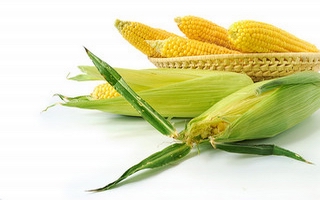 The drought reduced US corn crop of 2012 suggested that corn prices might behave in a pattern generally described as "short crops have long tails." The phrase depicts the expectation of rapidly rising prices that peak near harvest time, decline in an unspecified pattern over the next several months, and return to pre-drought levels as early as the following marketing year. The decline in prices is expected as a result of a slowdown in consumption and a return to normal production, writes Darrel Good.
The drought reduced US corn crop of 2012 suggested that corn prices might behave in a pattern generally described as "short crops have long tails." The phrase depicts the expectation of rapidly rising prices that peak near harvest time, decline in an unspecified pattern over the next several months, and return to pre-drought levels as early as the following marketing year. The decline in prices is expected as a result of a slowdown in consumption and a return to normal production, writes Darrel Good.Corn prices this year have generally followed the expected short-crop pattern as the expected consumption and supply responses continue to unfold. The pace of consumption of US corn so far in the 2012-13 marketing year has been slower than that of last year. However, the slowdown has been modest and has come primarily in the export market and in the production of ethanol rather than in the domestic feed market as earlier expected.
The rapid pace of domestic feed and residual use of corn revealed on January 11 breathed some life back into old crop corn prices even though the pace of exports and domestic processing remain low. In addition to a slowdown in consumption of US corn, the USDA projects another large corn harvest in Brazil in 2013 and a rebound in production in Argentina following the drought reduced harvest of 2012. While likely large, the size of those crops is yet to be determined and recent dryness in some areas has raised some yield concerns.
Some of the elements that contribute to the price decline following a short crop are clearly occurring. The final element, and likely the most important element, of the expected price decline is the size of the 2013 corn crop. The question is whether production will fully rebound from the extremely low level of 2012 as it has following other droughts over the past 50 years. Production prospects begin with expectations for planted acreage.
Planted acreage totaled 97.15 million acres in 2012, 5.219 million more than planted in 2011 and 3.628 million more than the recent peak in 2007. For the most part, analysts are reporting expectations of even larger acreage in 2013. Those expectations appear to be near 99 million acres. The increase would come from an overall increase in row crop acreage as some land has come out of the Conservation Reserve Program and from reductions in the acreage of less competitive crops.
Planted acreage of 99 million would point to acreage harvested for grain near 91.5 million acres under non-drought conditions. That would be an increase of just over four million acres from acreage harvested in 2012 when more than the usual amount of acreage was harvested for silage and abandoned. Such acreage would point to prospects for an extremely large crop in 2013. Early season acreage expectations, however, are often not a good forecast of actual acreage. Last year, for example, The USDA's March Prospective Plantings report indicated intentions to plant 95.864 million acres of corn, nearly 1.4 million more than the average trade guess. Actual planted acreage exceeded early expectations by the trade by nearly 2.7 million acres.
The other consideration in forming production expectations is obviously expectations for the US average yield. Most base their early yield expectations on an analysis of trend yield. Trend yield analysis, however, is not straight-forward. First, average yields over any time period reflect both changing technology and variations in weather conditions.
A calculation of the true technological trend in average yields requires that yield observations be "corrected" for annual variations in weather conditions. Such correction requires the application of models that separately account for the yield impact of technology and weather.
A failure to do so can result in a biased estimate of trend. Following three consecutive years of low corn yields, a trend calculation that does not adjust for variations in weather conditions will understate trend yield for 2013. A second issue surrounding trend yield calculations is the length of the time period used to calculate the trend. Different periods result in different trend calculations. We continue to think that 1960 through 2012 is the correct time period for calculating the 2013 trend yield.
A second consideration for some in forming early yield expectations is the state of soil moisture going into the planting season. However, as learned again last year, the yield implications of those conditions are dwarfed by the impact of growing season weather. While current drought conditions are of concern, those conditions alone do not provide much information about 2013 yield prospects.
While prices for the 2013 corn crop are currently about $0.70 below the peak reached in September 2012, they are well above the level that would be expected if the 2013 crop reached its full potential. Next month, the USDA will release projections for the US farm sector for the next 10 years. There will be a lot of interest in the 2013 corn acreage and yield projections contained in that report.





